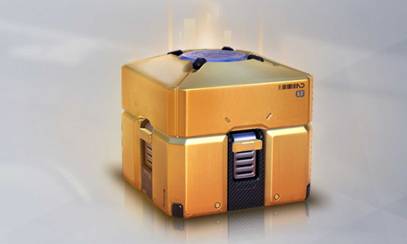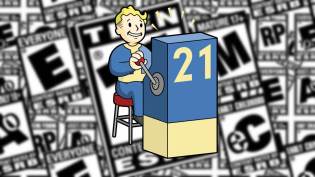
Loot boxes are digital grab bags that players have to spend real or in-game currency on. The trick is that you never know what’s inside. These are an issue in the world of video games.


(A combination of visual and aural factors can make it feel like Christmas)
The issue became national news prior to the release of EA’s Star Wars Battlefront II, where gamers felt they were being forced to gamble / pay-to-win to get the most out of the game.
It all started with downloadable content (DLC). In its simplest form, downloadable content is some form of add-on content for a released game that you download to use in the game you purchased.
After the model of making money with tiny cosmetic in-game items was proved successful, it wasn’t long before other major publishers were exploring the idea. For example, EA was already seeing tremendous return on its own experiments in its popular FIFA games.
Loot boxes have become more and more popular in the last year; the most modern wave can largely be traced back to :
- Blizzard’s Overwatch, which released in 2016. The game’s loot boxes feature cosmetic items, such as costumes, player avatars and voice lines for characters. You can’t pick which characters you get rewards for, so the items may or may not be for a hero you actually use. But none of the rewards affected actual gameplay, which may be why Overwatch wasn’t embroiled in controversy.
- Free-to-play games, which have long relied on small transactions to make money. Developers would artificially restrict gameplay in order to get players to invest in these “microtransactions” that would make the game more fun.
The first shot at loot boxes on the Western side of things was Valve’s Team Fortress 2. In June 2011, Valve transitioned the game to a free-to-play business model after the launch of the Mann-conomy update in 2010, which introduced crates and item trading. MMOs that fell on hard times, like Star Trek Online and Lords of the Rings Online, switched to the model when they went free-to-play as well.
In 2009, Andrew Wilson, the CEO of EA started taking advantage of this economy with the release of FIFA 09.


For the past few years, FIFA offered a mode called Ultimate Team, in which players would collect trading cards that they could use to build virtual clubs. Although EA initially sold Ultimate Team as an add-on to the main game, in 2010 the publisher started offering the mode for free, relying solely on card pack sales to generate revenue. That move paid off, as Ultimate Team now generates EA $800 million annually.
These days, it’s unusual to see a big budget game without some form of microtransaction. Overwatch, for instance, sells for $60, but then includes the ability to purchase loot boxes packed with cosmetic items.

They key to that game’s continued success is that everything else, from new maps and characters to new modes, remains free for everyone.
The debate seems to be more about not whether microtransactions should exist in video games, rather how these are handled.
EA learned just how careful a company has to be in the way it uses microtransactions with the release of Star Wars: Battlefront II. It was originally set to have a microtransaction system that asked players to invest extra time or money to unlock major playable heroes. The outcry led the company to temporarily pull the microtransaction system on the eve of the game’s launch.

Most gamers consider loot boxes as gambling. You open up a box and get items that may or may be what you want, or they may be worthless. This means that to get items they want, players may have to invest lots of money in multiple loot boxes until they hit the jackpot.
As for microtransactions, the argument is that you’re paying for something that should already be in the game. Many refer to this as “pay to play/win.” In the case of Battlefront, it was far easier to pay for a ton of loot boxes filled with powerful cards for your characters, rather than spend dozens of hours grinding for them in-game.
At the end of the day, publishers are businesses, and they’re looking for a profit. Video game prices have largely been flat since the late 1990’s. While publishers fund developers working on cutting edge graphics with innovative gameplay, full voice acting and motion capture and, in some cases, continuing to support the game for years after release, they haven’t been charging more for those games. Publishers may argue that this is a way to get a greater return on investment so they can continue making more expensive, innovative games.
The problem is that more and more developers are taking advantage of this and including micro-transactions / lootboxes everywhere.
While microtransactions are fairly straightforward, many gamers suggest the random rewards from loot boxes may be a form of gambling.
In October, though, the Entertainment Software Rating Board (which rates games for age appropriateness and factors like violence or sexuality) decided not to classify loot boxes as gambling.
In Hawaii, Rep. Chris Lee recently issued a statement referring to loot boxes as “predatory practices” by developers. He called Battlefront II a “Star Wars-themed online casino,” and while he thinks national change may be difficult, he wants to legislate against it at the state level. Also, in Belgium, the country’s gambling authority has declared Battlefront II’s loot boxes do constitute a game of chance and combine “money and addiction.” The commission reportedly wants the practice banned throughout Europe.
What can we do
If you’re a gamer yourself, vote with your wallet. You can complain all you want about loot boxes and microtransactions, but if you buy them, developers and publishers will keep utilising them.
Parents that don’t want their children spending money on in-game items can check to see if games have microtransactions or loot boxes. They can also make sure that no payment method, such as a debit or credit card, are attached to consoles or accounts that they’re using.
in China, loot boxes have to show a clear odd on getting a certain rarity/item and will be checked and authorised whether the odds are accurate. I think this rule should be applied to every game all around the world so at least you know what you are investing in / what items you could possibly get.
In my opinion, loot boxes should be removed completely, in order to balance the gameplay and to prevent children from being influenced by the gambling mechanic, unless they contain only cosmetics or items that do not influence or give an advantage to the player.
As for publishers and developers, they’re likely watching what’s happening with Star Wars Battlefront II with a cautious eye. EA has put a pause on micro-transactions and removed some of the most rare prizes from loot boxes in a hope to calm fans, and that could have a big impact on how the next wave of AAA games implement them.